A uniquely American institution.
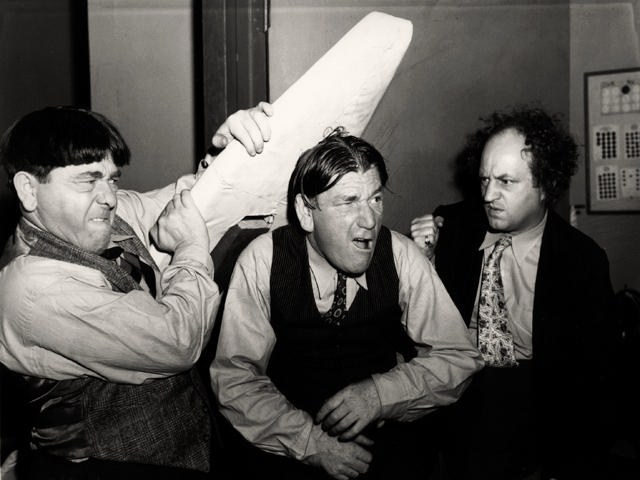
Conversely, Columbia was rather cold hearted, quickly billing Moe, Larry and Shemp as the Original Three Stooges, a designation that was actually historically accurate. From a production perspective, although unable to duplicate the unique persona of Curly, Shemp was an experienced and disciplined actor who was always prepared and professional. And he would do anything for a laugh.
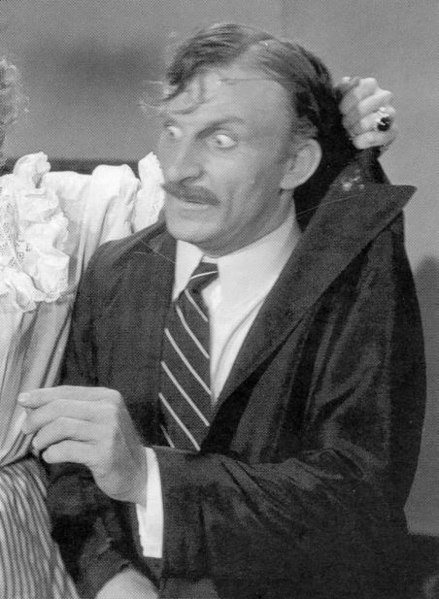
One of the most iconic Stooges efforts ever, Brideless Groom, filmed shortly after Shemp replaced Curly, featured non stop violence directed mostly in his direction. The plot concerns his efforts as a vocal instructor, Larry serving as pianist for an especially untalented and unattractive Miss Dinklemayer. After Shemp’s tutorial ends and the unfortunate Dinklemayer exits, he is suddenly confronted by Moe who tells him that his Uncle Caleb has died and left him $500,000, providing that Shemp is married within 48 hours of reading Caleb’s will.
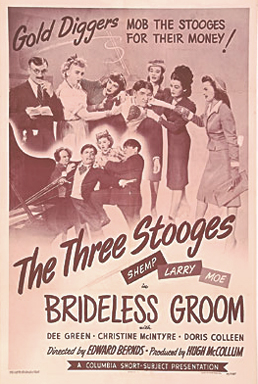
A telegram underlines that Shemp actually has only seven hours to make the deadline. Sequentially, after Shemp admits to having a black book filled with female telephone possibilities, both Moe and Larry grab him by the scalp and drag him towards a phone booth on their hotel floor. When these calls lead to failure, Moe intercedes, only to hopelessly entangle the both of them to near strangulation. Escape occurs by destroying the phone booth completely. With time running out, the Stooges return to their hotel room, discovering that a remarkably attractive woman is checking in across the hall. To make a realistic proposal, it is decided that Shemp needs an immediate makeover. Moe and Larry prepare shemp’s wardrobe, a process that includes furniture broken cranially, sewing needles thrust into Shemp’s calves, and boiling water equally distributed facially.
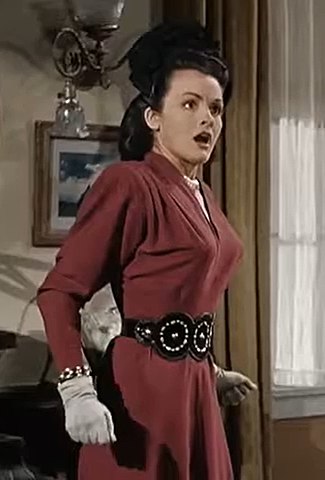
Appearing before a justice of the peace, Moe receives a telephone call warning him that all of the women who Shemp phoned earlier have read about Shemp’s potential inheritance. They are due to arrive at the Justice’s locale at any minute. When asked to produce the ring Shemp manages to inadvertently toss it into the interior of a nearby piano. Predictably, before the jewelry is retrieved, the lid is repeatedly dropped on Shemp’s head by an impatient Moe. Eventually, Shemp is propped up and ready to procede. With an enthusiastic, “Join hands you lovebirds,” the JP prepares to begin the ceremony, only to be abruptly interrupted by five women who are now also intent on marrying Shemp. In the ensuing fracas, one especially aggressive female prevents the Justice from continuing by slamming an occupied bird cage over his head, knocking him insensate. She then places Shemp’s head in a vise, demanding that he marry her. With each refusal she gleefully tightens the device, Shemp eventually reluctantly succumbing to her demands.
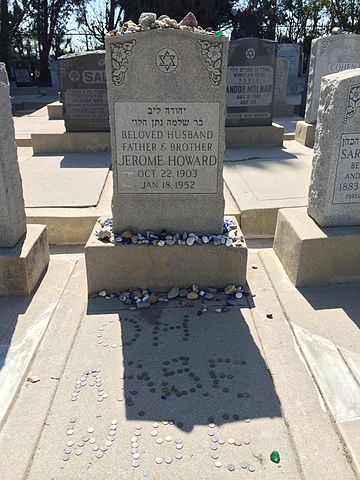
Brideless Groom went on to be one of the most famous Stooges episodes in the group’s career. The comedy not only featured one of the first appearances by character actor Emil Sitka as the Justice of the Peace, it also was one of four Stooge films that inadvertently entered into the public domain when a copyright was not properly renewed. For several decades television stations repeatedly ran the episode across America, generating unusually constant exposure and eventual status as a quintessential Stooge classic. With these types of efforts, Shemp Howard was able to help the trio to successfully continue after Curly’s sudden departure. This was fortunate as Curly proved unable to ever return, appearing only in two brief cameos, the latter appearance in 1949 so poor that it was cut from the film Malice in the Palace. A second stroke initially put him in a wheel chair and while a partial recovery allowed him to become ambulatory, any resumption of his film career was unthinkable. His health continued to deteriorate and institutionalization, first at the Motion Picture hospital and then in a succession of nursing homes selected by Moe. On January 18, 1952, bedridden and no longer able to even speak, Jerome (Curly) Howard passed away at a local that sounded like a fictional setting in one of their films, the Baldy View Sanitarium in San Gabriel, California. He was only 48 years old.
Podcast: Play in new window | Download
Subscribe: RSS
